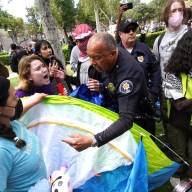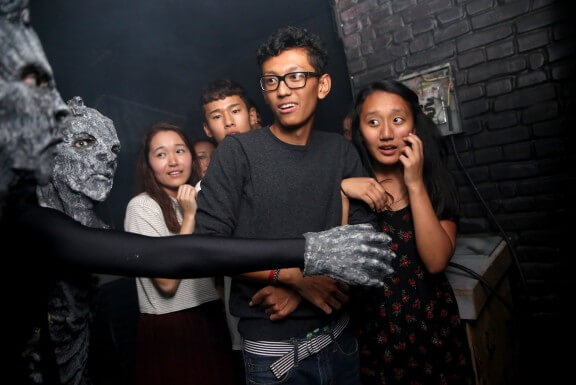 French filmmaker Abdellatif Kechiche made the Palmde d’Or-winning “Blue is the Warmest Color.”
French filmmaker Abdellatif Kechiche made the Palmde d’Or-winning “Blue is the Warmest Color.”
Credit: Getty Images
A lot has happened since Abdellatif Kechiche’s “Blue is the Warmest Color” premiered at the Cannes Film Festival in May. The epic relationship drama won the Palme d’Or, but in it’s wake its two actresses — Adele Exarchopoulos and Lea Seydoux, who play lovers whose relationship is viewed in full — have spoken out about the difficulties making the film, about being pushed. Seydoux has even separated herself from Kechiche, saying she’ll never work with him again. Since this interview, Kechiche has even written an op-ed, slamming Seydoux and others he felt were trying to destroy his film. In person, though, he’s calm, delivering his answers slowly, politely and with great care.
What drew you to make a film that looked at a couple that was homosexual?
I was hoping we would be able to get beyond the fact that it was two women. And while I was shooting the movie and creating the movie, as it went along, I forgot I was dealing with two women.
It’s the rare portrait of a couple that shows them moving from falling in love to falling out of it.
Part of what I wanted to work with is [a relationship] that starts off with a strong carnal passion and with time cools down. But I think that’s something that happens with everybody. It’s not easy to accept. I think for two people to continue to have a relationship that resonates, you have to find and have other reasons that keep you together. I think when there’s a breakup, it’s because one of them wasn’t able to transcend the physical relationship and go further. Here, I think it’s the different social milieus that come to the fore that ultimately cause the breakup. They couldn’t find a common ground. Their aspirations were different.
You shot for five months. How much of the story wound up on the floor?
There were a lot of scenes I didn’t put in the movie, either because I wasn’t satisfied in terms of the direction or in terms of the acting, or because I didn’t find them useful in terms of moving the story forward. It’s also because I had to make some choices, because three hours is starting to be a lot.
Will there be a longer cut?
Yes. With about 40 minutes more.
As you were writing the script, how much did you leave open for you to find it as you shot?
I sometimes write on the fly, but the screenplay already has all the different possibilities structured into it. There’s some things I don’t want to completely set in stone in the screenplay, that I want to see develop as the shooting evolves.
How did you work with your actors to get them deeply ingrained in their characters?
I like to try things and push them to extremes. Sometimes with the interpretation of the role, there’s a resistance. Sometimes time just breaks that down.
The stereotype of Europe versus America is that we’re very repressed as Europe is very open-minded. Homosexuality is a particularly controversial issue.
I don’t agree. I think it’s the opposite. It’s much more open here, from what I’ve witnessed. [His interpreter: “He hasn’t been to Podunk, Iowa yet.”] It’s confirmed by what’s been happening in France these last few months. I never imagined there was such a taboo that was still there. I don’t think we have a lot to teach others, we have a lot of lessons to get from others. I heard a lot about American Puritanism. But I feel it’s better here. For example, Steven Spielberg — I had been warned that he would probably be shocked by the film. And when I spoke with him I was surprised that he told me how much he loved the film and he couldn’t wait to show it to his daughters — that he felt it was an initiation to love that was beautiful.

















